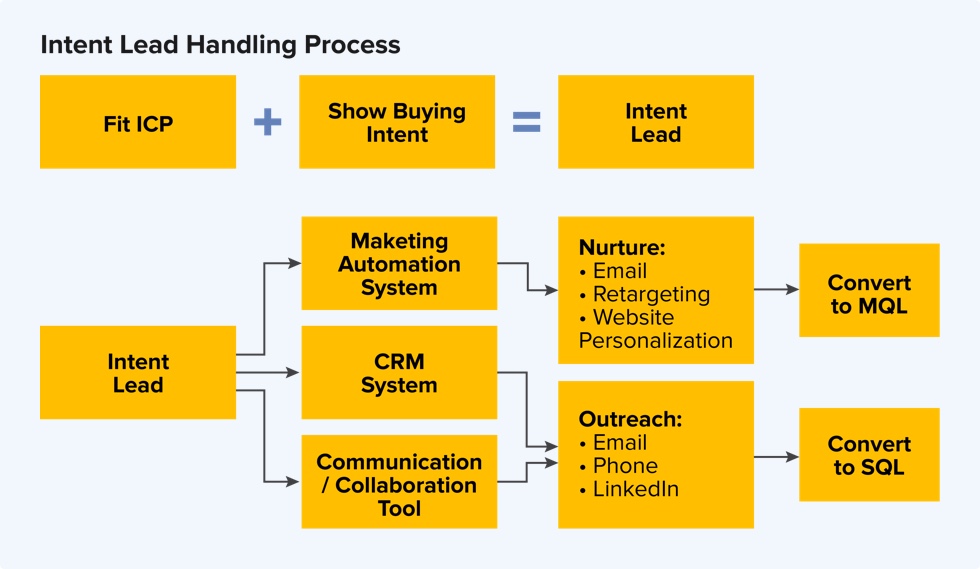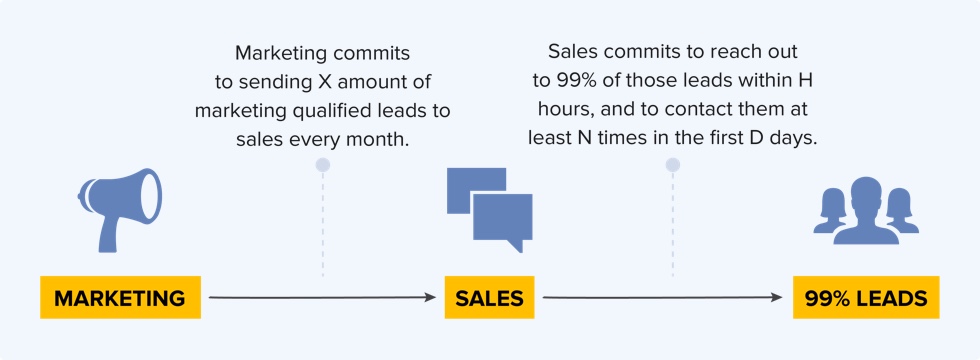Chapter 6
Optimize Lead Hand off Between Marketing & Sales
Learn what an Intent lead is, how to get more of them and the best way to organize your lead management hand off process.
Get the complete guideChapter 6
Learn what an Intent lead is, how to get more of them and the best way to organize your lead management hand off process.
Get the complete guideGaining intelligence on the unidentified demand your website is generating is great. What shouldn’t be overlooked is the process in which you hand off that intelligence to sales. A clunky lead management process can often be the cause of misalignment between marketing and sales.
It’s possible you already have a defined process in place for how you handle both inbound leads and outbound leads.
Typically, inbound leads will be sent to Sales Development Reps who will be tasked with qualifying the lead before passing it onto an Account Executive as an Opportunity.
Outbound Leads are typically handled by Business Development Reps or Outbound SDRs using prospecting and outreach tactics to generate interest.
However, capturing unidentified demand using the demand acceleration framework - whereby you identify companies who have visited your website and shown buying intent but have not converted through contact forms - are neither inbound or outbound leads.
They’re not technically inbound because they didn’t explicitly express interest by leaving their contact details
However, they can’t be considered an outbound lead either because they have shown some level of interest by visiting your website. They know who you are.
We call this type of lead an intent lead.

Intent leads need a hand off process from marketing to sales. Just like every other type of lead.
They’ll either be sent to your marketing automation system to be distributed into nurture campaigns until they convert or they’ll be sent directly to your Sales team for prospecting.
It’s worth noting that if the leads are sent to sales, a decision needs to be made on whether your SDRs or BDRs will be responsible for handling them.
This will of course depend on how your sales team is structured and who has the additional resources and capacity. Some level of prospecting and outreach will be required so making that clear to whomever will be actioning the leads is key.
Whether you’re handling inbound, outbound or intent leads, it’s always a good idea to put a service level agreement in place to foster marketing and sales alignment.
Service level agreements (SLA) have traditionally served to define exactly what a customer will receive from a service provider. But SLAs serve internal operations as well, and a sales and marketing agreement is among the most crucial.
In addition, as marketing and sales become more unified as one team - a revenue driving team with a unified goal - SLAs become critical if the teams are to reach their number together.
At a very top level, SLAs should outline the deliverables that one party has agreed to provide another. For marketing and sales, it might look something like this.

Having these goals as well as the needs of both parties to achieve goals outlined in the SLA will be important. For example, marketing might state they need weekly status reports of sales’ pipeline so they can optimize their demand generation campaigns.

Capture more of your existing demand without spending more budget